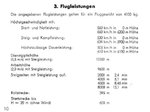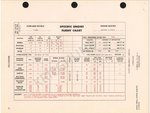Ah, guys, Packard delivered about 45 Merlins in ALL of 1941. While there may have been a few available for flight testing in a few air frames with 2/3 of production going to the British there would have been darn few American P-51s with Merlins before 1942. There were also only 138 P-51s accepted in 1941 compared to 2,246 P-40s and in 1942 the numbers went 634 P-51s to 3,854 P-40s. A big jumps in Mustang production came with the opening of the Dallas Factory and moving a lot of B-25 production to Kansas City.
It was also 'darn few' P-51s of any kinds before 1942, and none was in USAAC squadrons. None was also in 1942 (apart the A-36) - the 1st combat action of an USAAC P-51 unit was on April 9th 1943. The importance on the battlefield of the historical P-51, compared with other US fighters prior 1944, is only token.
A Merlin V-1650-1 wold have been better than an Allison powered one overall ( but not by much at certain altitudes depending which Allison) but it would not have been available in any numbers in 1942 or early 1943 and would only have been available at the cost of the P-40F which at the time was the second best Army altitude fighter available in any quantity next to the P-38. In 1942 early 1943 there were nowhere near enough P-38s to go around. Over 3600 P-40F-s were built along with 700 'L's. Granted near the end the V-1650-1 was competing for production with the V-1650-3 but allocation for raw materials and finished sub-contractor parts have to be months and months before a US plane ever saw combat.
P-51s with Allison engines amounted to 1080 pcs, + 500 in A-36 guise - that makes 1580 planes. Even if the input of 1650-1s remain the same, that would still leave 2720 of such engines for the P-40s production. Plus, of course, the V-1710s that are no more needed for P-51/A-36.
With Merlinized Mustang in late 1942 for USAAC (with Curtiss building a P-40-based dive bomber, so USAAC can have funds), that means a 400-mph single engined fighter - not yet another 370 mph one. Plus it has 20% more fuel internally to boost the range (along with far lower drag).
As for material part allocations, with a prototype P-51/Merlin flying early in 1941, there is plenty of time to allocate those. And allocations are already made both for P-51 airframe and V-1650.


